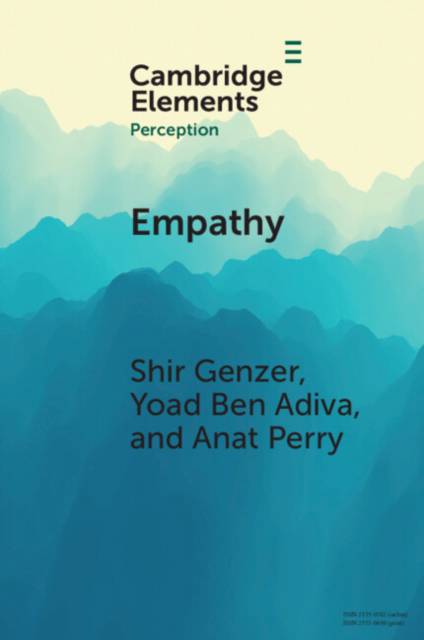
- Afhalen na 1 uur in een winkel met voorraad
- Gratis thuislevering in België vanaf € 30
- Ruim aanbod met 7 miljoen producten
- Afhalen na 1 uur in een winkel met voorraad
- Gratis thuislevering in België vanaf € 30
- Ruim aanbod met 7 miljoen producten
Zoeken
Empathy
From Perception to Understanding and Feeling Others' Emotions
Shir Genzer, Yoad Ben Adiva, Anat Perry
€ 31,95
+ 63 punten
Uitvoering
Omschrijving
Empathy provides a cognitive and emotional bridge that connects individuals and promotes prosocial behavior. People empathize with others via two complementary perceptual routes: Cognitive Empathy or the ability to accurately recognize and understand others' emotional states, and Affective Empathy or the ability to 'feel with' others. This Element reviews past and current research on both cognitive and affective empathy, focusing on behavioral, as well as neuroscientific research. It highlights a recent shift towards more dynamic and complex stimuli which may capture better the nature of real social interaction. It expands on why context is crucial when perceiving others' emotional state, and discusses gender differences, biases affecting our understanding of others, and perception of others in clinical conditions. Lastly, it highlights proposed future directions in the field.
Specificaties
Betrokkenen
- Auteur(s):
- Uitgeverij:
Inhoud
- Aantal bladzijden:
- 74
- Taal:
- Engels
- Reeks:
Eigenschappen
- Productcode (EAN):
- 9781009281102
- Verschijningsdatum:
- 21/12/2023
- Uitvoering:
- Paperback
- Formaat:
- Trade paperback (VS)
- Afmetingen:
- 152 mm x 229 mm
- Gewicht:
- 108 g

Alleen bij Standaard Boekhandel
+ 63 punten op je klantenkaart van Standaard Boekhandel
Beoordelingen
We publiceren alleen reviews die voldoen aan de voorwaarden voor reviews. Bekijk onze voorwaarden voor reviews.











